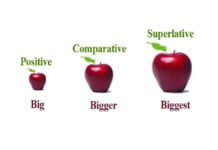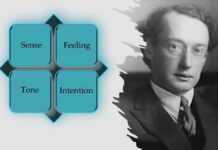Speaking is one of the most important skills we learn. It allows us to communicate with others, share our thoughts and ideas, and build relationships. Speaking skills can be divided into two categories: formal and informal. Formal and informal speech refers to the different tones, word choices, and structures used in different situations. Formal speaking is used when communicating with people we do not know well, such as in a job interview or a presentation. Informal speaking is used in situations where we are communicating with people we know well, such as friends and family.
Formal Speech
Formal speech is generally used in professional, academic, or public settings. It often follows the traditional grammatical rules and features a more sophisticated, precise vocabulary. Formal speech is typically more organized and devoid of slang or colloquialisms. It is used in business meetings, presentations, interviews, academic discourse, and ceremonial events.
Formal speech is characterized by the following:
- Use of polite language and grammar
- Avoidance of slang and profanity
- Use of a respectful tone of voice
- Clear and concise language
Purpose
Formal speech is typically used in professional, academic, ceremonial, or official settings. It is employed when addressing superiors, colleagues, or a broad and diverse audience.
Language
Formal speech often uses more complex and sophisticated vocabulary. It avoids slang, colloquialisms, and contractions (e.g., “do not” instead of “don’t”).
Grammar and Syntax
Proper grammar and syntax are crucial in formal speech. Sentences are typically longer and more structured.
Pronouns
Third-person pronouns (e.g., “he,” “she,” “they”) are preferred over first-person pronouns (e.g., “I,” “we”) in formal speech. This creates a sense of objectivity and detachment.
Politeness
Formal speech emphasizes politeness and respect. It often includes titles and honorifics (e.g., “Mr. Smith,” “Dr. Johnson”) and uses expressions like “please” and “thank you.”
Lengthy Introductions
Formal speeches often have elaborate introductions, including formal greetings and expressions of gratitude.
Structured Organisation
Formal speeches follow a well-organised structure, often with clear sections like introduction, body, and conclusion.
Nonverbal Cues
Nonverbal cues like maintaining proper posture, eye contact, and using appropriate gestures are important in formal speech.
Examples
Formal speeches include presentations, lectures, job interviews, academic papers, and speeches at formal events.
While speaking formally:
- Prepare for your speech or presentation. Make sure you know your material inside and out. Practice your delivery so that you are confident and polished.
- Use clear and concise language. Avoid using jargon or slang.
- Make eye contact with your audience. This will help you to connect with them and keep them engaged.
- Vary your tone of voice. This will help to keep your audience interested.
- Use gestures and body language to emphasize your points.
Informal Speech
Informal speech is typically used in casual, everyday conversations among friends, family, and peers. It’s characterized by its relaxed grammar rules and use of colloquialisms, idioms, slang, and contractions. Spontaneity and personalization, like using first names instead of titles, are common in informal speech. It is used in social media, text messages, casual conversations, and familiar environments.
Informal speech is characterized by the following:
- Use of casual language and grammar
- Use of slang and profanity
- Use of a friendly and relaxed tone of voice
- Use of personal pronouns and nicknames
Purpose
Informal speech is used in everyday, casual, and social situations. It is how people typically communicate with friends, family, and acquaintances.
Language
Informal speech uses simple and everyday vocabulary. Slang, contractions, and colloquial expressions are ordinary.
Grammar and Syntax
While correct grammar is still essential, sentences in informal speech can be shorter and less structured.
Pronouns
First-person pronouns are commonly used, creating a more personal and conversational tone.
Politeness
Politeness in informal speech is based on social norms and familiarity. It may include informal greetings and expressions like “thanks.”
Brief Introductions
Informal conversations often start directly with the main point and may not include extensive greetings or pleasantries.
Flexibility in Organisation
Informal speech is less rigidly structured. Conversations can flow naturally without strict organisation.
Nonverbal Cues
While nonverbal cues are still important, informality allows a more relaxed approach to body language and gestures.
Examples
Informal speech includes everyday conversations, text messages, emails to friends, and chats with family members.
While speaking informally:
- Be yourself. Do not try to be someone you’re not.
- Be genuine and authentic. People can tell when you’re being fake.
- Be a good listener. People appreciate it when you take the time to listen to them.
- Be respectful. Even if you disagree with someone, be respectful of their opinion.
- Be humorous. A little humour can go a long way in a conversation.
Both types of speech are necessary and have their place. The choice between formal and informal speech depends on the context, purpose of communication, and the relationship between the speakers. It is vital to adapt your speech style to the context and the expectations of your audience. Using the wrong style of speech in a given situation can lead to misunderstandings or make you appear out of touch. Using formal speech in an informal setting can make you seem cold and distant. Using informal speech in a formal setting can make you seem unprofessional and disrespectful. Switching between formal and informal speech is a valuable communication skill. Speaking is a skill that takes time and practice to develop. However, with effort, you can become a confident and effective speaker.





























